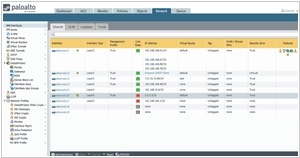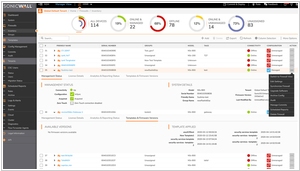Palo Alto NGFW vs SonicWall
August 05, 2023 | Author: Michael Stromann
See also:
Top 10 Firewall software
Top 10 Firewall software
Palo Alto Networks Next-Generation Firewall (NGFW) and SonicWall are two popular cybersecurity solutions, each with its own set of features and capabilities. Palo Alto NGFW is known for its advanced threat prevention capabilities and application-aware security. It can identify and control applications and users on the network, allowing administrators to set granular policies based on application usage. Palo Alto NGFW also incorporates advanced threat intelligence, sandboxing, and machine learning to detect and block sophisticated threats in real-time. Additionally, it offers seamless integration with other Palo Alto Networks products, providing a comprehensive security ecosystem for organizations.
On the other hand, SonicWall is a versatile network security solution that combines traditional firewall protection with additional security features. SonicWall is widely recognized for its deep packet inspection capabilities, which enable it to identify and block threats at the application layer. It provides extensive features for intrusion prevention, anti-malware, content filtering, and virtual private networking (VPN). SonicWall is also known for its ease of use, making it suitable for small to medium-sized businesses that need robust security without the complexity of managing multiple security appliances.
One significant difference between the two lies in their management interfaces. Palo Alto NGFW offers a unified management platform, Panorama, which allows administrators to manage multiple firewalls from a single console. This makes it convenient for organizations with complex network infrastructures. SonicWall, on the other hand, has its management interface called SonicOS, which offers a user-friendly experience but may require more effort to manage multiple devices efficiently. Ultimately, the choice between Palo Alto NGFW and SonicWall depends on an organization's specific security requirements, budget, and the complexity of its network environment. Larger enterprises with a need for advanced threat prevention and centralized management may lean towards Palo Alto NGFW, while smaller businesses may find SonicWall's simplicity and versatility more appealing.
See also: Top 10 Firewall software
On the other hand, SonicWall is a versatile network security solution that combines traditional firewall protection with additional security features. SonicWall is widely recognized for its deep packet inspection capabilities, which enable it to identify and block threats at the application layer. It provides extensive features for intrusion prevention, anti-malware, content filtering, and virtual private networking (VPN). SonicWall is also known for its ease of use, making it suitable for small to medium-sized businesses that need robust security without the complexity of managing multiple security appliances.
One significant difference between the two lies in their management interfaces. Palo Alto NGFW offers a unified management platform, Panorama, which allows administrators to manage multiple firewalls from a single console. This makes it convenient for organizations with complex network infrastructures. SonicWall, on the other hand, has its management interface called SonicOS, which offers a user-friendly experience but may require more effort to manage multiple devices efficiently. Ultimately, the choice between Palo Alto NGFW and SonicWall depends on an organization's specific security requirements, budget, and the complexity of its network environment. Larger enterprises with a need for advanced threat prevention and centralized management may lean towards Palo Alto NGFW, while smaller businesses may find SonicWall's simplicity and versatility more appealing.
See also: Top 10 Firewall software





